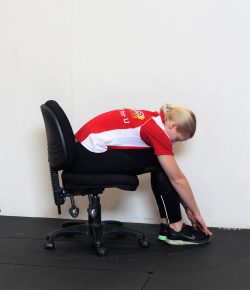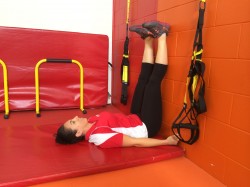 Sitting still for extended periods of time when working, travelling, or being ill, can make our bodies stiff and cause muscle ache. 60-80 % of us experience back pain at some point in our lives and sitting still is a big contributor to this problem.
Sitting still for extended periods of time when working, travelling, or being ill, can make our bodies stiff and cause muscle ache. 60-80 % of us experience back pain at some point in our lives and sitting still is a big contributor to this problem.
What muscles are affected?
Sitting down for a long time affects our posture and muscles, especially the gluteus maximus, hip flexors, and hamstrings. Our hip flexors get shorter and tighter from being in a seated position where they rarely get to stretch out, therefore they are more active in pulling us forward. This leads to its antagonist, the gluteal muscles, to not activate as effectively when they need to pull the body backwards. This can be explained the same way as a tug-of-war, if both sides are just as strong it will be a balance but if one side is stronger/more active that side will win and pull the other side over to the winning side!
When our hip flexors are “winning” (which is not a win at all, we need balance!) our hamstring muscles will try and help our gluteus muscles to hold back, which results in tight and over-worked hamstrings and this can even lead to overuse and strains. This is why it is important to remain a balance between the muscle groups, in every body part. There is always an agonist and an antagonist that do the opposite movements. For us to avoid injuries and overuse, we need to focus on a balanced training regime and also stretching out our muscles.
Legs up the wall
If you sit down at your desk all day, think about what your body is doing and remember that exercise and stretching can help you keeping in shape and avoiding aches and pains. Legs-up-the-wall pose is a great way to get the blood flowing to the parts of the body that need it, not just when you have been sitting still but also if you have been on your feet for a long time. It relieves tired and cramped up legs, it stretches the back of your legs and lower back, relieves lower back pain and can be therapeutic for headaches and insomnia.
Find a quiet space; sit down on the floor with one side towards a wall and feet on floor. Gently lie down on your back and then move your legs up onto the wall so that they are pressing against the wall. The bottoms of your feet are facing up, and your head is resting on the floor. It might be a bit of a jiggle to get into the position.
Let your hands and arms rest either by your sides or on your tummy, relax in your face and neck, close your eyes and breath deep slow breathes through your nose. Stay in the position for five to fifteen minutes.
To get more awesome fitness tips and help with your training get in contact with our Studio or Mobile Personal Trainers today!

